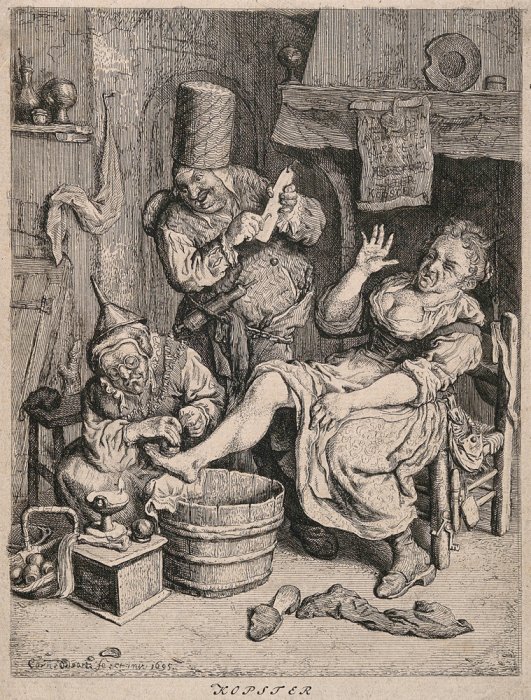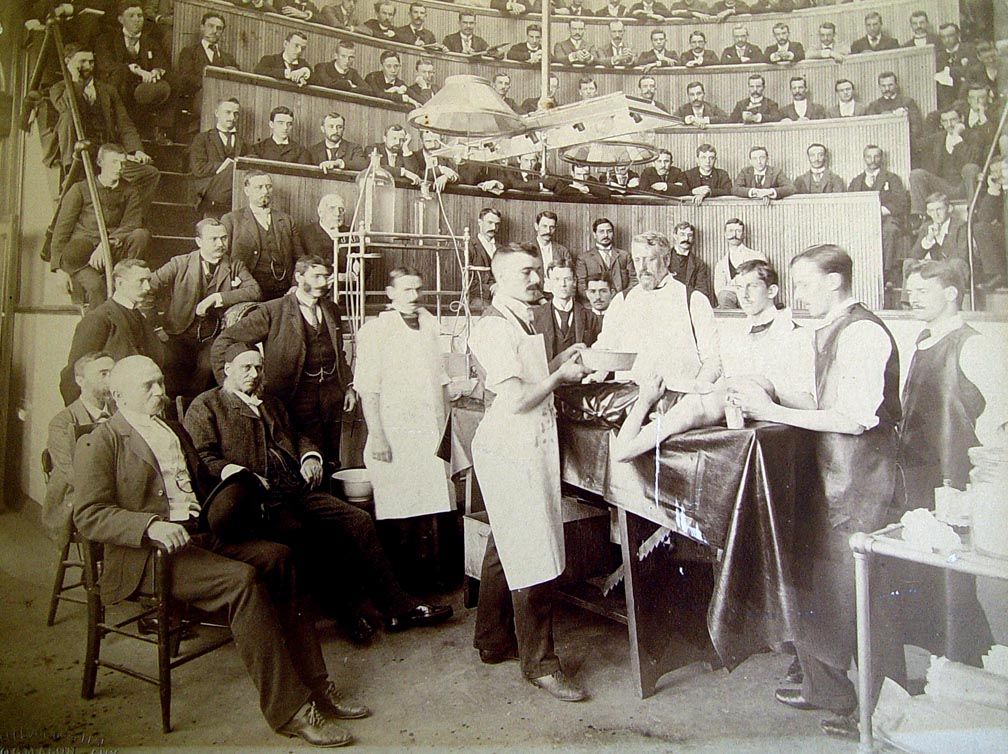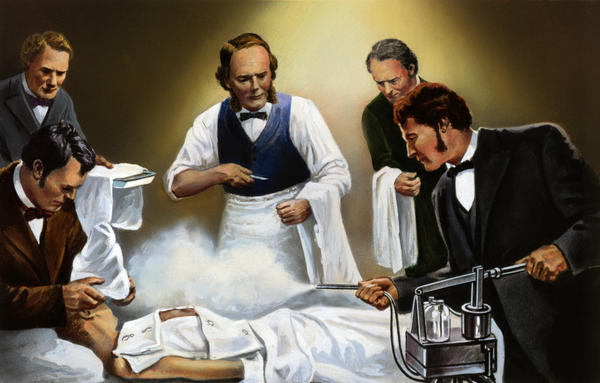Throughout the history, surgeons not always were held in a high esteem.
The first barbers-surgeons in medieval Europe had a terrible reputation.

Their job included a wide range of procedures from cutting hair to pulling teeth and amputating limbs. Another favorite procedure was bloodletting, a very impressive event, quite terrifying for the people who watched. No anesthesia, rampant infections and high mortality of their patients led to little reverence for those practitioners. They quite often were itinerant and moved from town to avoid seeing their own complications and often escape the wrath of their patients.

At the same time, real medical doctors were always nicely dressed, sitting at the bedside of their patients, with their thinking head rested on the hand which in turn was propped up on the knee. Or looking at the glass container with urine illuminated by the sun coming through the window.
Surgeon-barbers were uneducated quacks.
But then, as the need for them grew, surgeons were slowly becoming more and more relevant to the contemporary healing process. The trend started in the 19th century, first in Europe, then in the United States. The specialty was growing by leaps and bounds starting with a need for help in handling massive horrific casualties on the battlefields and was catapulted to full recognition with the development of anesthesia.

The social position of a surgeon surged. Medical schools trained more and more of them, and the science of surgery was propelled by solid background in basic research. Now it was an honor to be a surgeon. And, what’s interesting, their way of dressing became more sophisticated. Within a hundred years or so, from a slick, sloppily dressed handyman, dressed in a pus covered gown, a surgeon became a respected healer.

The results of their treatment, those good and bad, were more dramatic and came earlier than results of their colleagues, medical doctors. By the end of the century, the best known surgeons commanded good, sometimes exorbitant fees. The surgeon’s cuffs were designed by Saville Road tailors, so the doctor didn’t have to take his jacket off while examining his patient, not even while performing minor procedures.

And they dressed that way. It’s enough to look at the audience of this operating theater, which indeed a theater it was.
David Colton Sabiston was the chairman of the Department of surgery at Duke University from 1964 to 1994. All the residents at Duke had to wear the tie while outside the operating room. When the young surgeon was to talk to the patient’s family after the procedure, he had to change to a white shirt and tie. Visits in scrubs were not acceptable. One of the residents, a future pioneer in a mechanical heart implant, who appeared at the conference in slacks which looked too casual, was sent home to change. My own professor in Poland was of the same social principles. No wonder, his educational path went through iconic Mass General. For him, that hospital was a Mecca of the surgical world. He even had a can of fresh air from Boston, proudly displayed in his office’s library.
All that was to show their social status, command the respect of the society, and at the same time show the respect for the patient. There was a certain aura of being a surgeon. And a certain distance between him and the patient was to be maintained.
This was easier to achieve in a bigger city. In a small community, though, the relationship between a local physician, who also served as a family surgeon and OB doctor, was much closer. He attended weddings and funerals and conceivable he was a part of the extended family.
So how far do we go in becoming close to the patient? Friending them on a personal page on Facebook? Socializing outside the official events? Sharing out personal problems with them? How do we feel having drinks after hours with our respective gynecologist or urologist? Does relating your personal stories to the patients and their families make us more human? And do the patient trust us more?
I grew up in an atmosphere of decorum, which was cultivated sometimes to the extreme. You didn’t call your older colleague by his first name, unless he allowed you to do so. Did it help? I don’t know. But it helped to show respect to each other and also to your patients. Then there was a difference between Europe and in the United States. In Great Britain, surgeons gained the right to be called Mister and their social status was solidified early. Once I came to the ICU in my hospital in the United States. A new nurse stepped to me, helped take my coat off and hang it. My initial reaction was that of disbelief, but I didn’t show it. Later on, I found out she came from England and was educated there. This gesture was – or it should be – to bring a feeling of mutual courtesy and respect, which certainly makes the work area more civilized. There is enough pressure in dealing with all the usual patient’s problems, and a feeling that the team works in unison eliminates one extra layer of complexity. And most of the patients pick up on this right away.
I’ve personally felt that there should be some distance between the doctor and his patient. For me, it was always difficult to call my older patients by their first names, even if they requested me to do so. Respect, but at the distance.
And no Facebook friendship for me, either.


